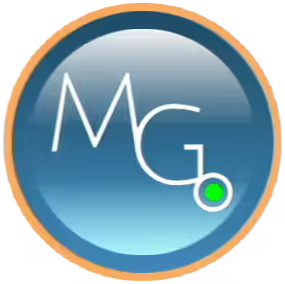Current Concepts in Motor Learning and Rehabilitation: 13 CEU hrs.
Contact Us with 12+ Attendees, or Check out Where We'll Be Next!

Current Concepts in Motor Learning and Rehabilitation: 13 CEU hrs.
Contact Us with 12+ Attendees, or Check out Where We'll Be Next!
COURSE SCHEDULING:
We are currently scheduling for the 2022 calander year. Are you interested in hosting the MotionGuidance® Course for your group of clinicians?
If so please contact eric@motionguidance.com or contact us below and we will discuss making it happen.
CONTACT US ABOUT HOSTING A COURSE:
" I liked the accessibility of the instructors and that we got plenty of practice so we could implement our skills right away in the clinic. I loved the evidence-based articles you also provided and reviewed to assist us in our practice to maximize our time with our patients to get the best outcomes we can for them. I also feel that this will really help with patient compliance for HEP. It was a great weekend of learning! "
- Sandy O. PT, Rapid City SD.
Course Description:
Motion Guidance presents a 12 hour, one-day continuing education course. This course is composed of a live 8 hours and 4 hours of pre-course online course viewing. This course is open to PT, DC, AT, SCSC, and Personal Trainers. The main areas of treatment focus will include the head / neck, shoulder, lumbar spine, and lower extremities.
Joint Position Sense deficits and movement dysfunctions have been discovered and linked to various conditioning that are commonly treated in physical rehabilitation medicine. This rehabilitation continuing education course is directed toward educating healthcare professionals on how to make researched based assessments and treatments. The content utilizes current motor learning principles and gives insight into how patients can respond to various types of feedback and motivation yielding immediate improvements in movement, motor control, and improved retention to enhance both movement and performance. This interactive 2-day, lab intensive course will include lecture, patient demonstrations, and lab time to give the participants an opportunity for in-depth problem-solving and refinement of technique for using motor learning principles and motor control exercises for the assessment and treatment of conditions and dysfunctions associated with the head/neck area, shoulder, knee, and lower back pain. The attendee will leave with a good understanding of how to implement motor learning principles to any body part or condition.
At the completion of this course, the participant will be able to:
Whiplash Associated Disorder
Concussion
Chronic Neck pain
Rotator Cuff related shoulder pain
Shoulder instability
Patello-femoral pain
ACL deficiency
Post-Operative Knee conditions
Return to Participation testing and performance training for the lower chain
Chronic Lower Back pain
...AND MORE
The Motion Guidance course will be an interactive course that brings in current up to date research on treating these various conditions. After the course, you can instantly apply new concepts of patient learning, assessment, and treatment with your patients.
Instruction in Motor Learning Principles and Introduction to the Motion Guidance Visual Feedback system with lecture, demonstration and lab practic
7:30- 8:00 AM Registration
About the Presenter:
Eric M. Dinkins – PT, MSPT, OCS, Cert. MT, CMP, MCTA, CCI
Eric is a graduate from the University of Colorado Health Sciences Center and has been practicing since 2001. He has earned post-graduate certifications in Manipulative Therapy, is a Certified Mulligan Practitioner, and is an Accredited Instructor with the Mulligan Concept of manual therapy. He earned his Board Certification as an Orthopedic Clinical Specialist through the American Physical Therapy Association. Eric completed post-graduate education in Exercise Physiology and has an extensive sports medicine background. He has worked closely with physicians from the Steadman-Hawkins Clinic in Denver, and has treated athletes from youth, weekend warriors, Olympic, and professional levels. His primary clinical interest is optimizing movement and performance utilizing motor learning principles incorporating evidence based research on joint position sense, movement, risk management, and dynamic conditioning.
He is a the Co-owner of Motion Guidance, LLC. A visual feedback and product development company. Other clinical interests include: Mobilization with Movement, utilizing the Motion Guidance system to improve visual feedback in rehabilitation, and treatment options for Restless Legs Syndrome. He is a published author and was a key-note speaker at the International Mulligan Conference in 2009. When not practicing and teaching, Eric enjoys spending time with his family, mountain biking, and playing guitar.
Board Certified Specialist in Orthopedics- American Physical Therapy Association
Accredited Mulligan Concept Teachers Association Instructor
Clinical Mentor, Orthopedic Residency Program
Credentialed Clinical Instructor-American Physical Therapy Association
ONLINE CEU APPROVED COURSE
Motion Guidance is a rehab product, but it is built behind a concept. If you are interested in our educational content, click below for our 5-module CEU course.
5+ HOURS OF CLINICALLY RELEVANT EDUCATION THAT YOU CAN APPLY IMMEDIATELY WITH YOUR PATIENTS. 5 BODY-SPECIFIC MODULES, FOR $99